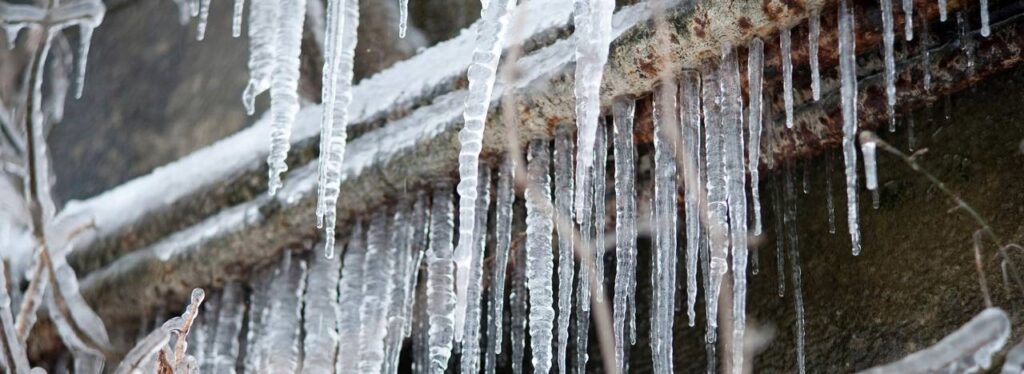Protecting Your Pipes from Freezing: Best Methods
Protecting Your Pipes from Freezing: Best Methods
Blog Article
We've found the article involving How to prepare your home plumbing for winter weather down the page on the internet and believe it made perfect sense to share it with you on my blog.

Winter can damage your plumbing, particularly by freezing pipelines. Here's exactly how to stop it from occurring and what to do if it does.
Introduction
As temperature levels decline, the threat of frozen pipes boosts, potentially causing costly repair work and water damages. Comprehending how to avoid icy pipelines is vital for property owners in cool climates.
Prevention Tips
Shielding vulnerable pipes
Cover pipes in insulation sleeves or utilize warmth tape to secure them from freezing temperature levels. Focus on pipelines in unheated or external areas of the home.
Home heating methods
Keep indoor rooms adequately heated, particularly locations with pipes. Open cabinet doors to enable warm air to distribute around pipes under sinks.
How to recognize frozen pipes
Try to find decreased water flow from faucets, uncommon smells or sounds from pipes, and visible frost on revealed pipelines.
Long-Term Solutions
Structural adjustments
Consider rerouting pipelines far from outside walls or unheated areas. Include additional insulation to attics, cellars, and crawl spaces.
Upgrading insulation
Invest in high-quality insulation for pipes, attic rooms, and wall surfaces. Proper insulation helps maintain consistent temperature levels and reduces the risk of frozen pipelines.
Securing Outside Plumbing
Garden tubes and outdoor faucets
Detach and drain pipes yard hoses before winter season. Install frost-proof spigots or cover outdoor taps with insulated caps.
Recognizing Frozen Pipelines
What creates pipelines to ice up?
Pipes ice up when exposed to temperature levels below 32 ° F (0 ° C) for extended periods. As water inside the pipes ices up, it expands, putting pressure on the pipe wall surfaces and possibly creating them to burst.
Threats and problems
Icy pipelines can cause water interruptions, home damages, and pricey repair work. Ruptured pipelines can flood homes and trigger extensive architectural damage.
Indicators of Frozen Pipes
Determining icy pipelines early can stop them from bursting.
What to Do If Your Pipelines Freeze
Immediate activities to take
If you presume icy pipes, keep faucets available to relieve pressure as the ice melts. Use a hairdryer or towels taken in warm water to thaw pipes gradually.
Conclusion
Avoiding frozen pipelines calls for positive measures and fast feedbacks. By understanding the causes, signs, and safety nets, home owners can safeguard their plumbing throughout cold weather.
5 Ways to Prevent Frozen Pipes
Drain Outdoor Faucets and Disconnect Hoses
First, close the shut-off valve that controls the flow of water in the pipe to your outdoor faucet. Then, head outside to disconnect and drain your hose and open the outdoor faucet to allow the water to completely drain out of the line. Turn off the faucet when done. Finally, head back to the shut-off valve and drain the remaining water inside the pipe into a bucket or container. Additionally, if you have a home irrigation system, you should consider hiring an expert to clear the system of water each year.
Insulate Pipes
One of the best and most cost-effective methods for preventing frozen water pipes is to wrap your pipes with insulation. This is especially important for areas in your home that aren’t exposed to heat, such as an attic. We suggest using foam sleeves, which can typically be found at your local hardware store.
Keep Heat Running at 65
Your pipes are located inside your walls, and the temperature there is much colder than the rest of the house. To prevent your pipes from freezing, The Insurance Information Institute suggests that you keep your home heated to at least 65 degrees, even when traveling. You may want to invest in smart devices that can keep an eye on the temperature in your home while you’re away.
Leave Water Dripping
Moving water — even a small trickle — can prevent ice from forming inside your pipes. When freezing temps are imminent, start a drip of water from all faucets that serve exposed pipes. Leaving a few faucets running will also help relieve pressure inside the pipes and help prevent a rupture if the water inside freezes.
Open Cupboard Doors
Warm your kitchen and bathroom pipes by opening cupboards and vanities. You should also leave your interior doors ajar to help warm air circulate evenly throughout your home.

Do you like more info about Winter Plumbing Precautions: Preventing Frozen Pipes? Make a short review further down. We would be delighted to hear your opinion about this blog posting. In hopes that you come back again soon. If you please set aside a second to distribute this blog posting if you enjoyed it. Thank-you for going through it.
Article Report this page